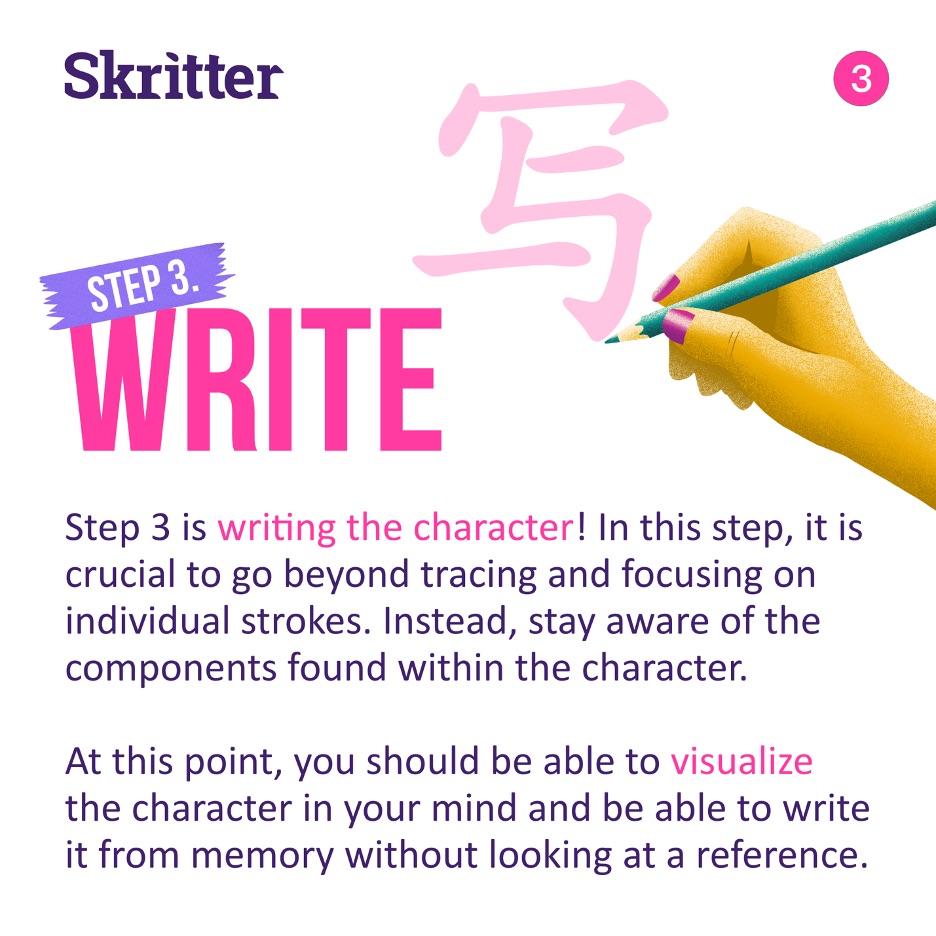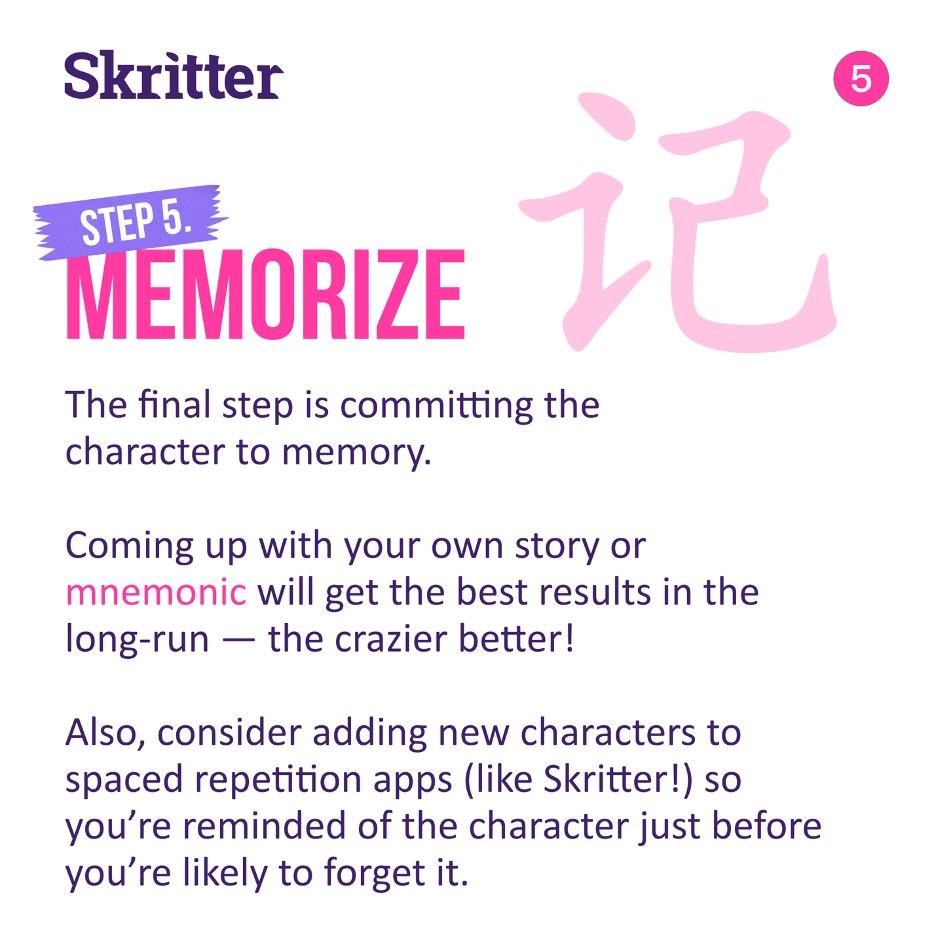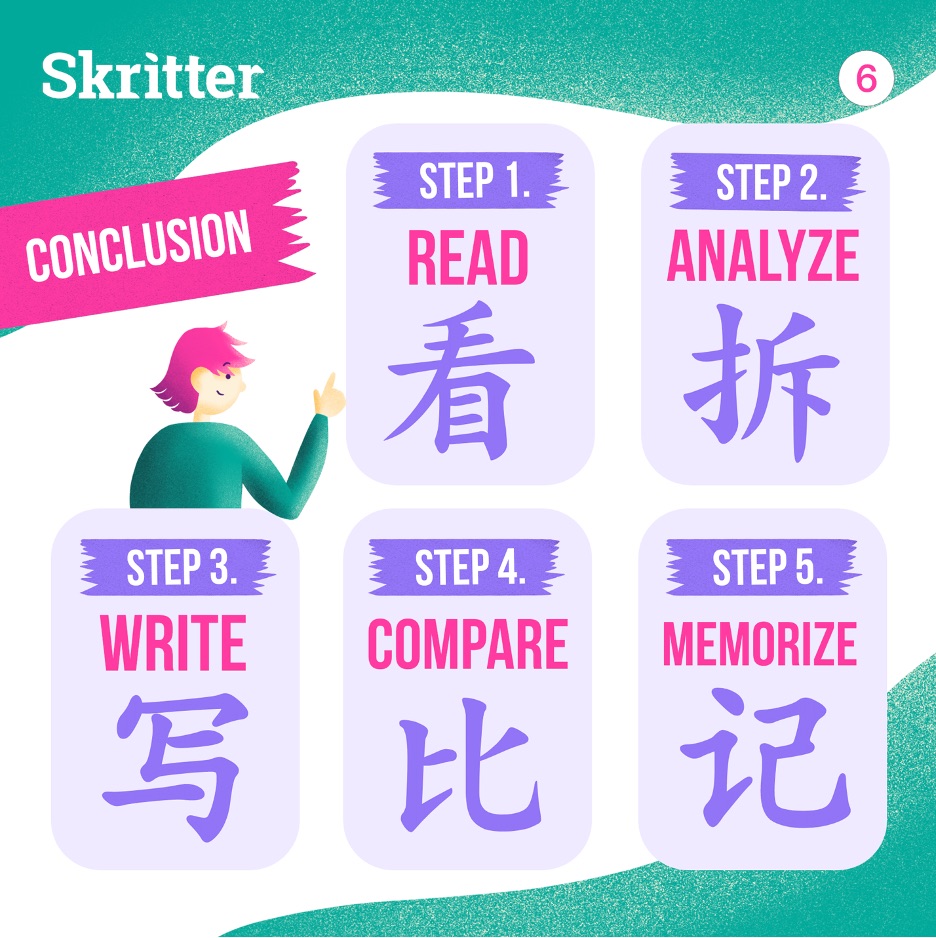
It appeared in our textbook as a 口号[口號] (kǒuhào: slogan), which has stuck with me ever since. In this article, I will break down the slogan into individual parts, and provide an example or two about how it works.
Here is the slogan I pass on to you…
一看二拆三写四比五记
一看二拆三寫四比五記
yī kàn èr chāi sān xiě sì bǐwŭ jì
Step 1: Read
看 (Read): The first step to effectively learn and remember characters is to actually look at the character. So simple, right? While this step is fairly straightforward, the goal should be to go beyond a quick, often unconscious glance. Rather, we should be aware and conscious of the new character before us.

Step 2: Analyze
拆 (Analyze): The second step involves 拆开[拆開] (chāikāi: separation), or the analysis of this new character. During the process, one should think back on what they’ve learned about 部首 (bùshǒu: radicals) and 部件 (bùjiàn: components) and see if you can’t identify them in this new character. Don’t know the radical or a component element? Skritter is great in providing this information, but apps like Pleco and websites like MDBG will also give you similar character decompositions.

Step 3: Write
写[寫] (Write): Now that you’ve taken the time to consciously look at and analyze the new character, it is time to write it. During the third step in the process of learning a new character, it is important to go beyond the number of strokes and stay aware of the components found within the character. It helps to hide the original character from your view as well (if you can) … to help overall memory retention. In addition to writing the character, I also find that saying the individual components of the character as I’m writing them really helps keep me aware of them and helps solidify a more conscious study process.

Step 4: Compare
比 (Compare): Now that you’ve reached step four it is time to step back from your work, and 比较 [比較] (bǐjiào: compare) what you’ve written with the original character. Do they look similar, is your stroke order correct? If not, make the necessary adjustments and try again. If they look the same, then proceed to step five!

Step 5: Memorize
记[記] (Memorize): The final step is about actually committing the character to memory. So how do you do it? Mnemonics, or other memory retention techniques like storytelling help aid in the memorization process.

Conclusion:
Let’s look at the 5 steps one more time:

Do you want to begin your writing journey? We recommend starting with one of these pre-made Skritter decks:









0 Comments